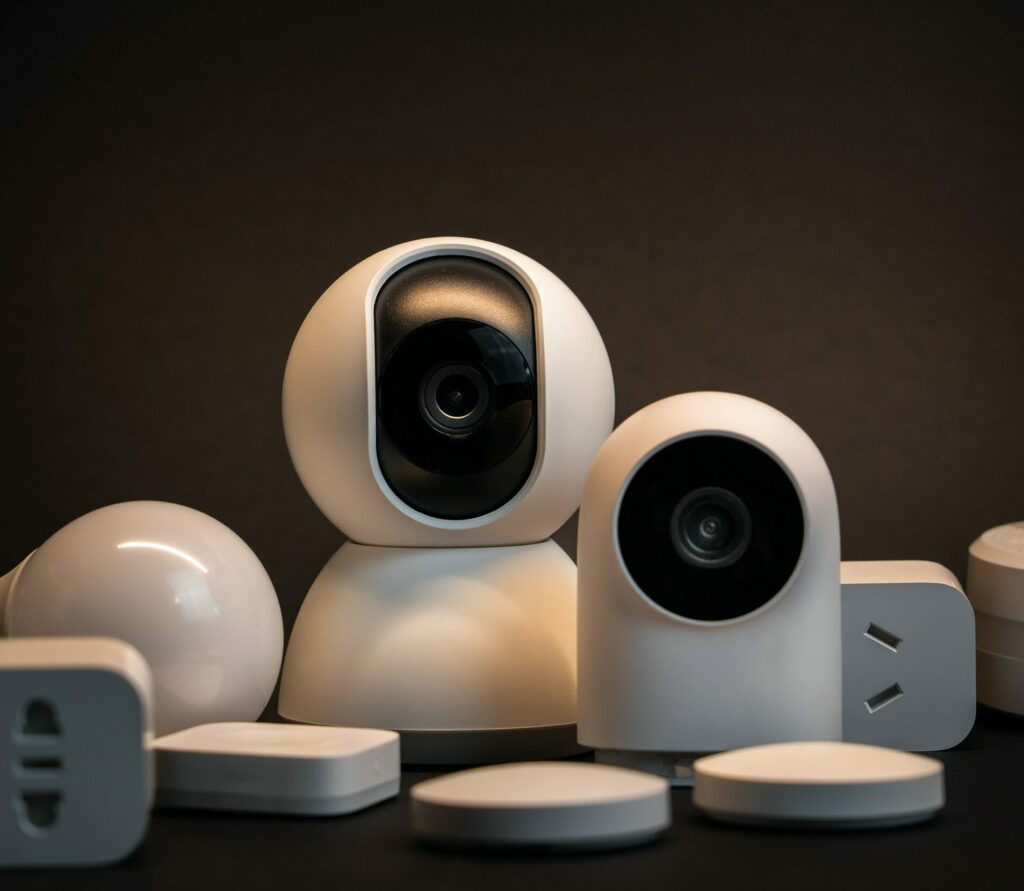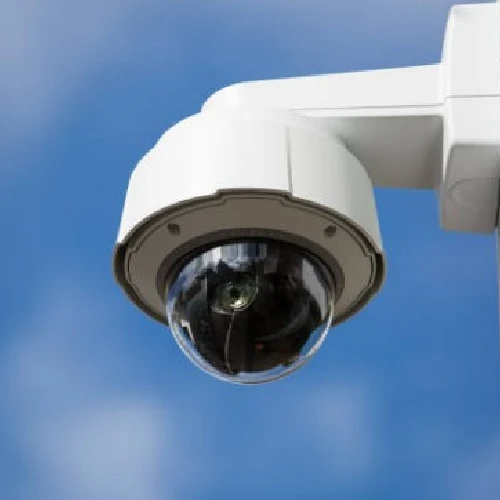Brydon
October 9, 2023
Safety at home is key to our peace of mind. Homeowners are increasingly turning to security cameras to enhance this feeling of security. These cameras serve multiple roles: they scare off potential burglars, and capture important footage during incidents.
This guide will explore strategic spots to place these cameras for optimal coverage. Knowing where to set up your cameras can be a game-changer if you’ve experienced a break-in or are just being proactive.
Burglar Statistics in Canada
A recent statistical analysis revealed that in 2020, Canada experienced a burglary rate of 362.9 incidents per 100,000 inhabitants. This figure represents a significant decrease from the 772.7 incidents per 100,000 people reported in 2006. SGI Canada has highlighted that a residential break-in takes place in Canada every 90 seconds. Alarmingly, over 80% of these break-ins transpire during the day.
Why Placement Matters
Investing in a security camera system for your home is a commendable decision that bolsters safety. Below is a concise overview of why their placement is paramount:
- See More, Miss Less: Put cameras in the right places, and they’ll catch more action.
- Scare Off Thieves: When burglars see a camera, they often back off. Make sure your cameras are where they can be seen.
- Clear Evidence: If something does happen, a well-placed camera can get clear shots. This helps if you need to show the police or prove something.
- Smart Cameras Work Better: Got a fancy camera with motion alerts? It works best when placed right. Fewer false alarms and more real alerts.
- Feel Safer: Knowing you’ve got the right view of your home, day or night, just feels protected.
Maximizing Security Where It Matters Most
Improving your home’s security involves identifying vulnerable areas where unauthorized activity could occur. By recognizing these key locations, you can optimize your security measures effectively. Let’s explore these areas to help you build an efficient home security system.
Front Door
The front door is one of the most common entry points for burglars.
Recommendations for Front Door Camera Placement:
- Angle: A slightly downward angle, ensuring you capture everyone’s face, even if they’re wearing a hat or hood.
- Height: Ideally, place the camera at around 8-10 feet. This provides a comprehensive view while making it less susceptible to tampering.
Garage Entrances
Garages are more than just car storage; they grant access to the house and store valuable tools or equipment. This makes them an attractive target for thieves.
Garage Entrance Camera Placement:
| Location | Recommended Angle | Optimal Height |
| Above Garage Door | 45° downward | 9-12 feet |
| Side Entry | Facing the door directly | 7-9 feet |
| Inside Garage | Overlooking the entire space | 8-10 feet |
Securing the Outdoors
Your yard isn’t just a space for leisure and greenery. It’s an access point for intruders and a place where valuables are kept, especially if you have sheds or other structures. Effective camera placement here ensures that no activity goes unnoticed.
Best Camera Placement Spots in the Yard:
| Location | Recommended Angle | Purpose |
| Garden Shed | Facing the door directly | Protect tools and equipment stored inside. |
| Rear Entrance | 45° downward | Monitor any attempts to access the home from the rear. |
| Patio/Deck | Overlooking the entire space | Watch over outdoor furniture and entertainment areas. |

Driveway
A seemingly innocuous driveway is a storage space for one of your most valuable assets (your vehicle) and a common entry route for potential intruders. Ensuring a clear and wide view of this space can provide early alerts and deterrence.
Ideal Camera Placement for Driveway:
| Location | Recommended Angle | Notes |
| Garage Entrance | Facing outward | Monitor vehicles and any activity near the garage door. |
| Driveway Midpoint | Wide angle, overlooking entire driveway | Offers a broad view, capturing movement along the driveway. |
| Near Street | Facing home entrance directly | Captures the approach of any unfamiliar vehicles or persons. |
Window Security
Ground-level windows can be weak spots for break-ins. But with the right camera spots, you can make sure they’re safe spots instead.
Burglars see ground-level windows as an easy way in. They sometimes need to be more secure and hidden from street view. But with a camera watching, burglars could think twice.
Where to Place Your Cameras for Window Safety
| Spot to Watch | Camera Angle | Why It Helps |
| Front Windows | Tilted down a bit | See anyone near your front windows. |
| Side Windows | Straight on or a little tilted | Clear view of side paths or hidden spots. |
| Back Windows | Tilted down or straight | Keeps an eye on the back of your home. |
| Windows Near Plants | Above, looking down | Stops burglars from hiding behind plants. |
High Traffic Areas
High-traffic areas in your home are particularly vulnerable because they are where most activities occur. Burglars are also likely to target these locations due to their accessibility and the presence of valuable items. Let’s examine these areas closely and discuss strategies for positioning security cameras effectively.
Kitchen
The kitchen isn’t just for cooking; it’s often the hub of the home. A lot happens here, from morning coffees to late-night snacks.
Why Watch the Kitchen?
- Safety First: Monitor appliances for mishaps like fires or leaks.
- Check-ins: Keep an eye on kids or elderly family members.
- Prevent Unauthorized Access: Intruders can use the kitchen as an entry or search for valuables.
Living Space
You relax, entertain, and spend quality time in your living room. It’s one of the most commonly used areas in a home.
Why Need a Camera Here?
- Monitor Activities: Great for parents to keep an eye on kids or pets.
- Protection: Most electronics like TVs or gaming systems are found here; cameras can deter theft.
- Evidence: If a break-in does occur, having clear footage from a commonly accessed area can help in investigations.
Blind Spots
According to Tech-Wonders, blind spots in home security refer to areas around your property that are not visible or inadequately covered by surveillance cameras. These are spaces where intruders can hide or move undetected, making them potential vulnerabilities in your security setup.
How to Identify and Cover These Blind Spots:
- Take a Walk: Periodically walk around your property inside and out. Look for areas that your current camera setup needs to cover.
- Look for Hiding Places: Areas with dense foliage, behind structures like sheds, or unlit corners can be blind spots. Ensure these are visible to at least one camera.
- Elevation Helps: Sometimes, placing a camera higher up can give it a broader view. Thus, eliminating blind spots.
- Mirror Test: Hold a mirror in potential blind spots. If you can’t see the reflection of any camera in the mirror, that spot is likely not under surveillance.
- Wide-Angle Cameras: Consider using wide-angle cameras or fisheye lenses in areas with potential blind spots. They can capture a larger area, reducing the number of uncovered spaces.
- Regularly Review Footage: By periodically watching your security footage, you can spot areas where coverage is weak or non-existent.
- Use Camera Overlap: Ensure that the field of view from one camera slightly overlaps with another. This way, even if intruders avoid one camera, they’ll likely be caught on another.
Camera Types & Smart Features
Today’s home security cameras are about more than just recording footage. They’re equipped with advanced features. These camera types are designed to be smarter and more efficient at ensuring your home’s safety.
Overview
- Wired Cameras: Directly connected to a central system, they offer stable connectivity but need professional installation.
- Wireless Cameras: They use Wi-Fi to transmit footage and are generally easier to install and move around.
- Doorbell Cameras: Installed at your front door, these cameras serve dual purposes: a doorbell and a security camera.
- Pan, Tilt, and Zoom (PTZ) Cameras: These can be remotely controlled to change focus, offering dynamic surveillance options.
- Outdoor Cameras: Built ruggedly to withstand weather elements and provide surveillance for your home’s exteriors.
Smart Features in Modern Security Cameras:
| Feature | Description | Benefits |
| Motion Detection | Detects movement, and triggers recording/alerts. | Saves energy; instant alerts. |
| Night Vision | Sees in low light or darkness. | 24/7 surveillance. |
| Facial Recognition | Identifies known/unknown faces. | Spot potential threats. |
| Two-way Audio | Speak and listen through the camera. | Communicate or deter unwanted guests. |
| AI Learning | Reduces false alarms; recognizes usual activities. | Fewer false alarms. |
| Cloud Storage | Stores recordings on the cloud. | Access anytime; safeguarded footage. |
| Smart Home Integration | Works with other smart devices. | Enhanced security ecosystem. |
Where NOT to Put a Security Camera
Inappropriately placing a camera could lead to uncomfortable situations or even legal consequences.
Areas to Avoid:
- Bathrooms
- Private Bedrooms
- Changing Rooms
- Guest Rooms
Secure Your Peace of Mind
Security isn’t just about having cameras; it’s about placing them right. Proper home surveillance is more than just technology; the peace of mind comes with knowing your loved ones and assets are safe. It’s the tranquillity you feel when you rest at night, knowing your home is being vigilantly watched.
With the right placement of security cameras, security is better addressed. Meet it with efficiency and contact MAG Security for the leading products that you deserve.
Frequently Asked Questions
How do you maintain camera security systems?
|
Task |
Details |
|
Cleaning |
– Clean the lens with a microfiber cloth. |
|
– Wipe the camera body to remove dust. |
|
|
Power Check |
– Inspect cables for wired systems. |
|
– Change batteries in wireless cameras as needed. |
|
|
Updates |
– Keep software and firmware up to date. |
|
Functionality Test |
– Periodically check camera features: recording, motion sensors, night vision. |
|
Monitor Storage |
– Check storage devices regularly. |
|
– Backup footage; consider auto-overwriting when full. |
|
|
Adjust Placement |
– Modify camera angles with seasonal changes or obstructions. |
|
Weatherproofing |
– Inspect seals/casings on outdoor cameras, especially post-bad weather. |
|
Connectivity |
– Ensure wireless systems are connected; check wired connections. |
|
Inspect Mountings |
– Confirm cameras are securely fastened. |
|
Backup Data |
– Backup settings and essential footage periodically. |
How to install Telus smart home security?
Here’s a general step-by-step guide:
Preparation:
- Ensure all components are available.
- Decide on installation spots based on home layout.
- Confirm Wi-Fi is active.
Main Panel/Hub:
- Install near the main entrance.
- Power it on, connect to Wi-Fi, and follow the on-screen setup.
Sensors:
- Attach door/window sensors, ensuring alignment.
- Position motion sensors in room corners, avoiding windows.
Cameras:
- Choose a location with a clear view.
- Mount and connect to Wi-Fi.
Additional Devices:
- Install smart locks, thermostats, etc., following the provided manuals.
Sync Devices:
- Link all devices to the main panel or via the app.
- Test each device’s connection.
Mobile App Setup:
- Download the TELUS Smart Home app.
- Log in and link to your security system.
System Testing:
- Test all components together.
- Check and perform system updates.



